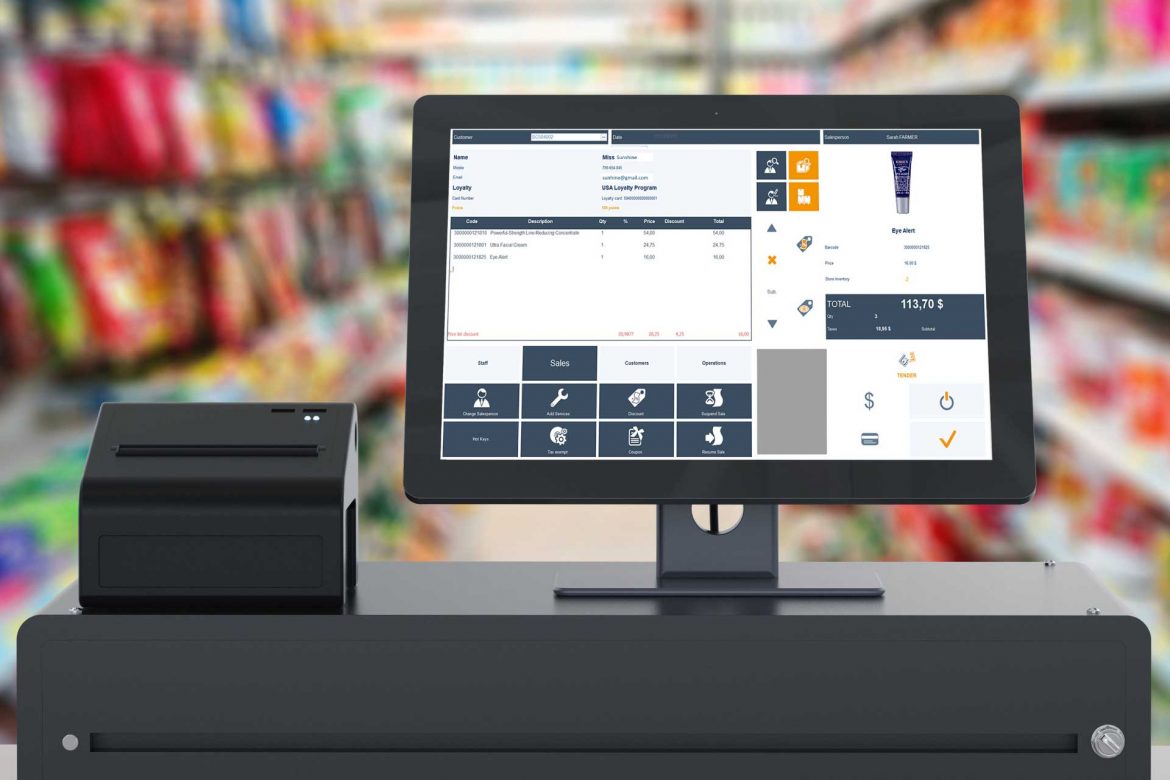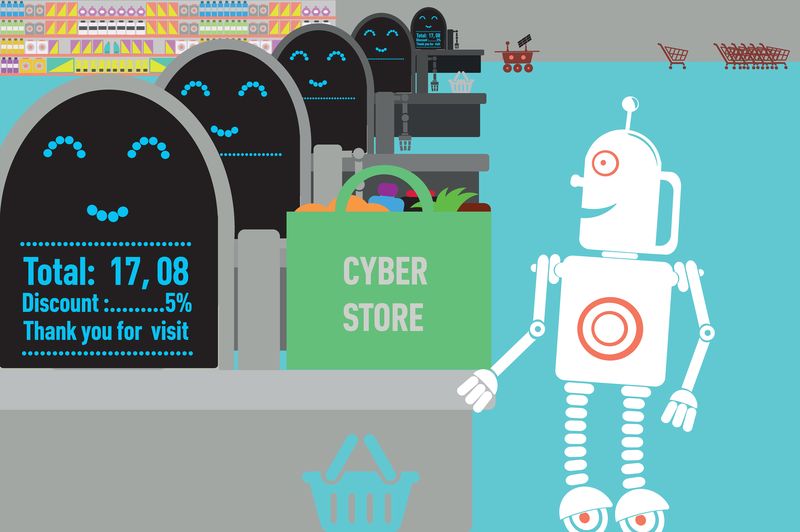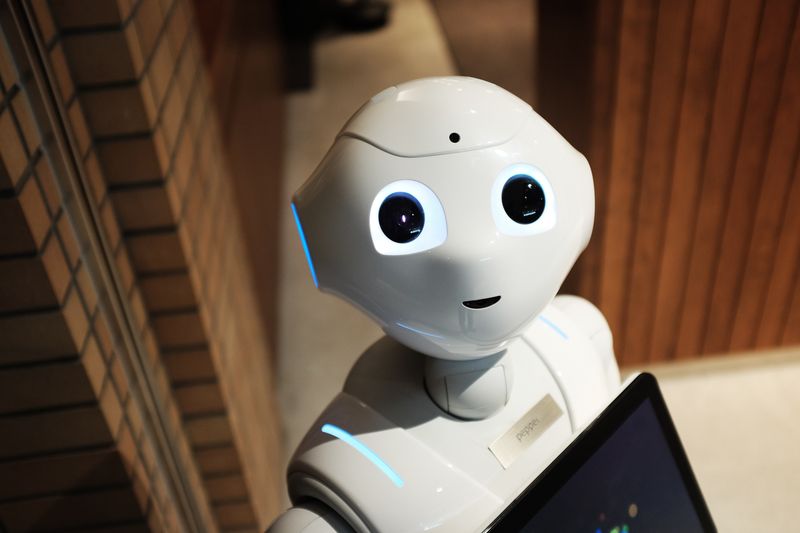
From pen and paper to a cashier
smartphone
From handwritten invoices to innovative retail cash desks and mobile payment systems. Cash registers have been in use for decades and today it is impossible to imagine life without them. Whether in a restaurant, at the supermarket or at the petrol station - cash registers are used everywhere. The point of sale continues to develop in order to make processes more accessible and efficient for both sales staff and consumers. The rapid developments of the last few years are intriguing. In which direction is the train going and when is the best time for me to jump on it as a company?
A look into the future
No one can predict exactly how the landscape of POS systems will change in the future. However, we can consider "What if?" and try to formulate our ideas and run through possible scenarios.
So what if:
- Checkout is automated?
- Shops without a checkout are standardised?
- Robots take over everyday shop life?
And what can we predict today?
One realistic scenario is automated checkout, which is used in some stores (as a supplementary or exclusive variant). Customers are offered the possibility to scan and pay for goods themselves. The results are: considerable reduction in the personnel costs and the chance for the staff to concentrate more on customer service and stocking shelves. In addition, a lot of space is saved and the checkout process is accelerated - instead of just two workstations with operator tills, you can install six self-checkouts.
Even though the advantages may seem very tempting at first glance, this type of checkout solution also have some disadvantages. In the event of system failure, skilled personnel needs to be present to remove the error and support the customer. There is also an increased risk of theft, which would require additional security staff. Furthermore, customers are not as skilled with checkout operations as trained personnel, so the process usually takes longer and for some older customers it may not even be possible.
All in all, automated checkout concept is a good step in the right direction although it carries some challenges. Of the approximately 3000 automated checkouts in Germany, about half are currently used in the large supermarket chains.
“Come in, pack in, find out" - shopping is finished without checkout
Works exactly similar to automated checkout, but is different and goes one step further. We have known cashless shops for many years in the form of online purchasing and recently also in the food trade, increasingly scoring points with delivery services.
Even though online trade is booming in the current pandemic situation and is used more than ever before, many consumers still prefer to hold the items in their own hands before making a purchase. The constant ordering and returning of goods is perceived as overcomplicating. Especially for this target group, cashless stores come in handy.
Within Germany, several large electronics stores have already tested the cashless shop for a few months - with predominantly positive customer feedback. In contrast to international experiments in Austria, China and the USA. Aspects such as technical errors and slow self-checkout service, long waiting time upon entering the shops caused a lot of frustration among consumers.
Despite technical difficulties, the experiment of cashless operation was implemented in China in a very interesting way. Customers were automatically recognised: at the entrance door they had to have a QR code scanned, which they had previously downloaded using an app. In addition, the customers' faces were saved using augmented reality. Placing articles into bags or baskets and leaving the shop through a so-called "pay door", which enabled the amount due to be immediately debited from the customer's account.

The advantages are clear:
- No cashier is required
- There are no queues at the checkout
- The shopping experience is more relaxing
- Customer data can be analysed for further optimisation processes
However, the automatic checkout system is very susceptible to errors. In the event of a failure, the entire shop comes to a standstill. In addition, customers would have to learn how to handle the new process first, which is time-consuming. The idea of scanning and saving faces is bound to be protested by some, in the context of data protection.
Robot Paul sends his greetings
Paul is not just a thought, but soon will become a reality. At least this is what the "Job Futuromat 2020", the small but very informative website of the Institute for Employment Research, conveys.
Source: https://job-futuromat.iab.de
A 100% automation capability means that the job could be completely taken over by a machine.
Robots are not seen any more as an abstract solution but rather as the reality. What about their use in retail? As a cashier? An amusing idea, but rather unlikely, as robots seem rather impractical compared to cashless loading. Why put a robot behind the checkout counter when no counter is necessary?
 But this does not mean that there are no suitable tasks for the little helpers in our shop system. While checkout is automated upon leaving the store, customers need to be advised when shopping, especially in specialist shops. This is where robots come into play! A large electronics market has already introduced this as a pioneer in a test run. Customers were welcomed at the entrance by Robot Paul , who was responsible for greeting customers, answering questions and providing information about articles, as well as where to find them. In one store alone, the robot was able to travel a total of 520 kilometres in 12 months and interact with 100,000 customers. It has also attracted a lot of attention from customers and as a loyal work colleague, it is hard to imagine a store without it.
But this does not mean that there are no suitable tasks for the little helpers in our shop system. While checkout is automated upon leaving the store, customers need to be advised when shopping, especially in specialist shops. This is where robots come into play! A large electronics market has already introduced this as a pioneer in a test run. Customers were welcomed at the entrance by Robot Paul , who was responsible for greeting customers, answering questions and providing information about articles, as well as where to find them. In one store alone, the robot was able to travel a total of 520 kilometres in 12 months and interact with 100,000 customers. It has also attracted a lot of attention from customers and as a loyal work colleague, it is hard to imagine a store without it.
Conclusion
No matter what happens or what may come - the point of sale solution as we know it, will change grately. The train has already been set in motion and only those who jump on it early enough will be ahead in the end - no matter in which direction the train moves. We at MS POS are eager to follow the development and will continue to inform you about current trends in POS systems.


